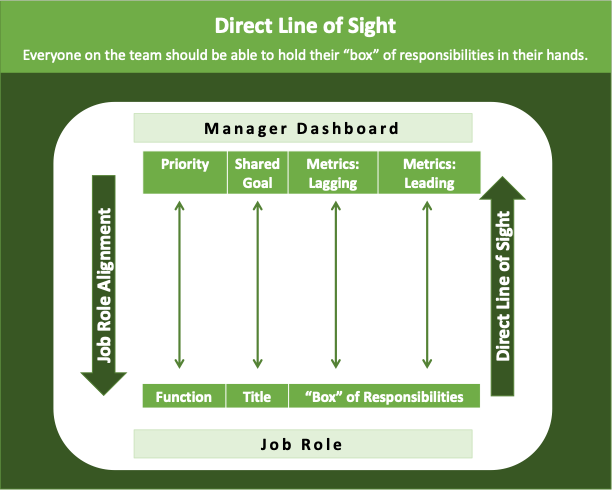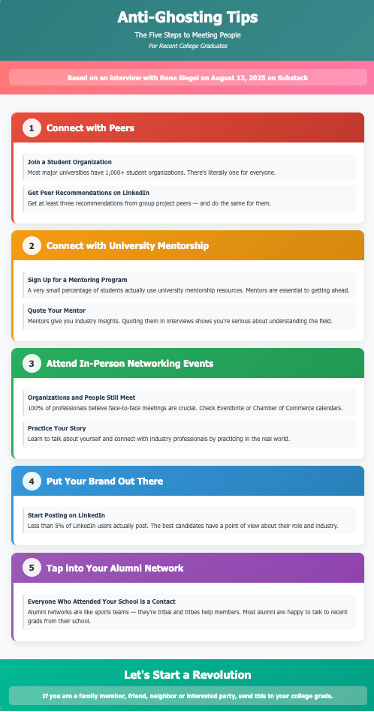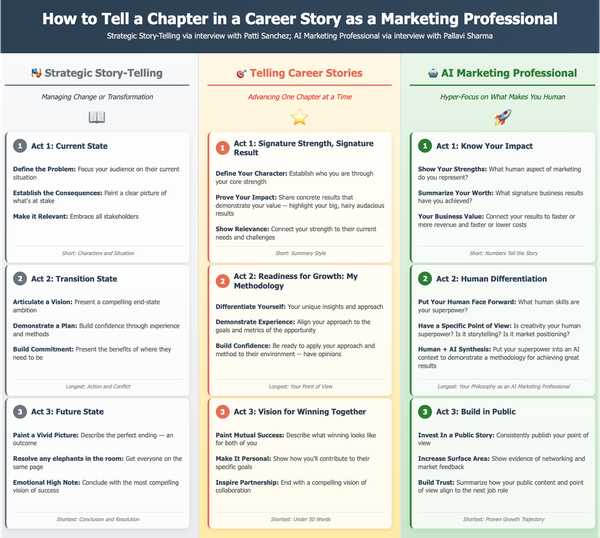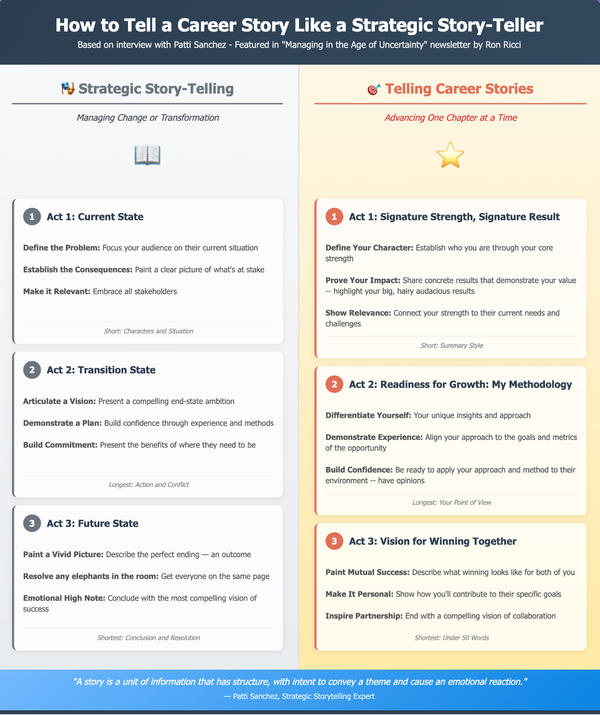People need BHAGs as much as Companies Do
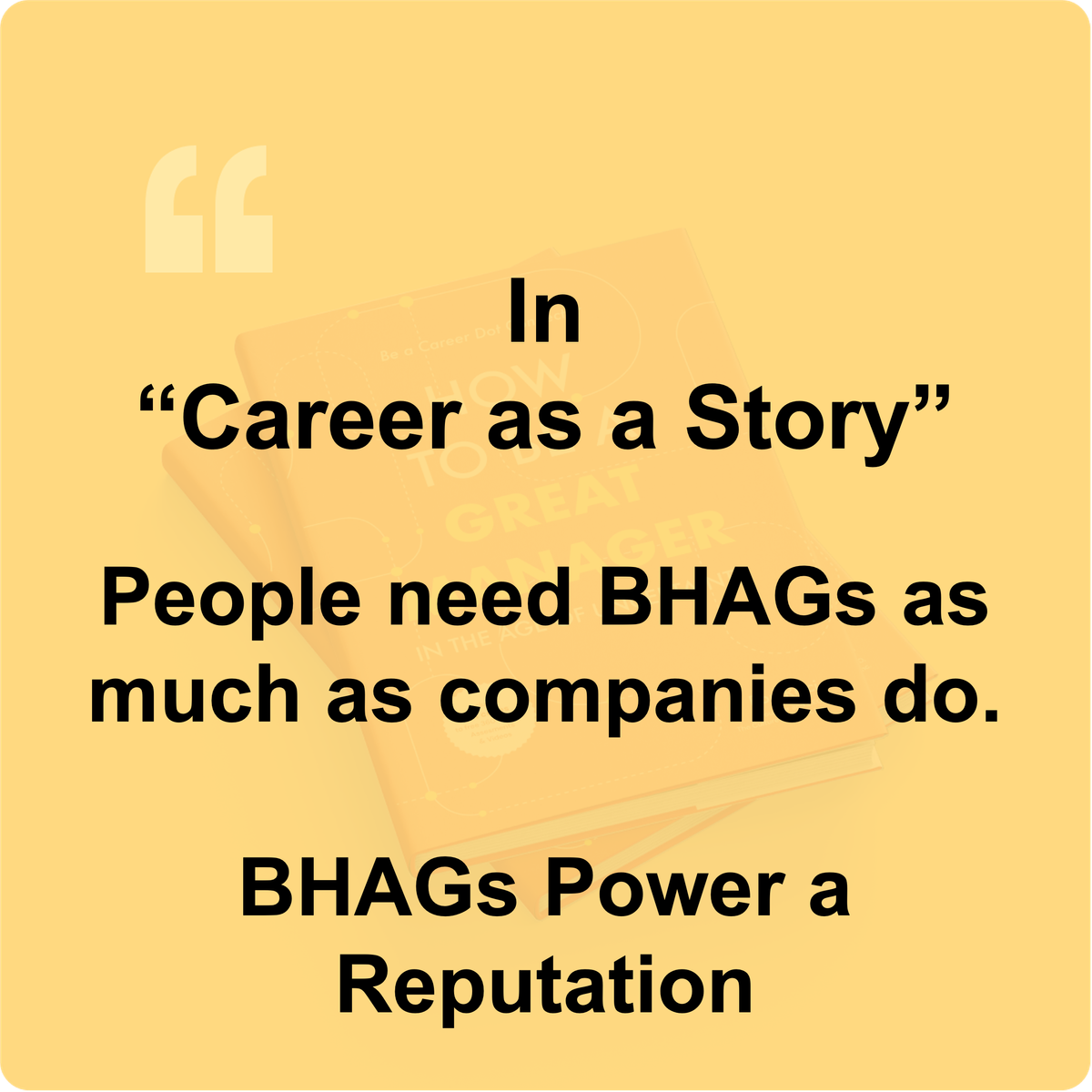
“What do you want to be known for — what’s YOUR brand?”
For boomers, life on the corporate ladder could last 20 or 25 years, or longer.
My 93-year old dad reads my Substacks, and he recently told me he spent 35 years in the same function at Bristol-Myers moving up 20 job rungs to make it to headquarters in New York City.
But he also mentioned that he finished one rung short of his goal. I asked him what happened at grade 21. His response: “My manager.”
While an individual boomer’s performance influenced their ability to move up the ladder; in reality, a boomer’s manager was the single most important factor in whether a team member got ahead or not.
One of the trade-offs of a predictable set of steps on a career ladder was the fact that people didn’t control their ascent up the ladder — unless their performance was consistently top 10 percent over a period of years and absolutely demanded recognition.
For the other 80 percent or so, boomer managers determined when someone could move up to the next pay grade, or not, in my dad’s case. Managers, being people, can be inconsistent or play favorites or reward bad behaviors. It’s one of the core reasons phrases like “corporate politics” and “infighting” became so entrenched as a boomer cultural artifacts.
So this shouldn’t be a surprise: the #1 reason boomers left a job role was their manager.
On the other hand, millennials and gen-z know they won’t have the same manager for a decade, let alone one or two years. The pace of change, powered by AI, is just too swift and isn’t likely to slow down. It’s why I call this newsletter Managing in the Age of Uncertainty.
In the absence of the corporate ladder, millennials and gen-z know all they can control is their career story — but they want the story to be a hit, a best-seller that can’t be ignored when getting ready for the next job role.
So, we shouldn’t be surprised by this: the top reason millennials and gen-z leave a job is a lack of growth and advancement in the role.
In this week’s newsletter, I’m continuing my five-part series to help managers understand what “career as a story” means to millennials and gen-z — and help them align their job roles to an opportunity to grow.
I created “Five Dots of a Career Story” Checklist below to help managers, literally, “connect the dots” for their people.
The final of the five dots in this framework asks this question: How does my role empower a reputation?
Why Reputation?
The next generation are looking for job roles that can create a reputation independent of their manager. It doesn’t mean millennials and gen-z don’t want to be managed. Quite the opposite: people want to make a big impact for their manager, so big that everybody notices.
For boomers, reputation meant internal focus and to an important degree the reputation of your manager. The next generation knows their reputation has to be different from boomers in two ways:
- From internally focused to externally focused. How does this job role give me a chance to stand out when I want my next role, no matter where it is?
- From manager focused to contribution focused. How does this job role focus on my results, not who I work for?
What: Personal BHAGs
If you are managing people today, I encourage you to borrow a concept still popular in business after many decades: The Big, Hairy Audacious Goal or BHAG.
Instead of an organizational BHAG, people need personal BHAGs. Your best people want what I call “signature projects” — to tell a story so powerful it stands on its own and communicates the potential of the person being ready for their next role.
As readers of this newsletter have heard me emphasize many times, job role alignment to a managers priorities, goals and metrics is the key to giving people on a team the ability to write a chapter of a career story. Not every goal will feel like a BHAG in scope, as team leader — because you know all goals aren’t created equal — but the people whose jobs are aligned to the goal, it is a BHAG.
Your job as manager is to inspire your people see a Big, Hairy Audacious Goal in their job responsibilities. People are proud of their work and want to exceed expectations on their manager’s dashboard. Tapping into people’s emotional commitment to a job is also the key to discretionary effort and over-achieving — which is good for you and your people.
How: Have a Personal Brand Plan
It’s such a joy to ask experienced, successful managers for their thoughts on how to help this generation of managers empower people on a team to build a reputation that fuels a career story. One of those managers is my friend Brian Jeffries from Cisco. He reminded me that while a BHAG-ish outcome is the key to building a reputation, it’s only part of reputation. The other part is your personal brand.
Here’s what he told me: “What do you want to be known for — what’s YOUR brand? Your reputation is being established for you, whether you consciously do it or not. The earlier you put thought into your brand in your career story, the better. Because once a reputation is established, the harder it is to change.”
Brian suggested a personal brand has two components:
- What’s your superpower? “Are you a specialist with deep knowledge? Are you wide with deep experience? Your one or the other.”
- What’s your personal brand positioning? “Are you Dr. Customer? Dr. Fix-it? Dr. Strategy?”
Great advice for the age of uncertainty. Don’t let your brand be defined for you — it’s as important as your BHAG.
Reminder: The 5 Dots Framework
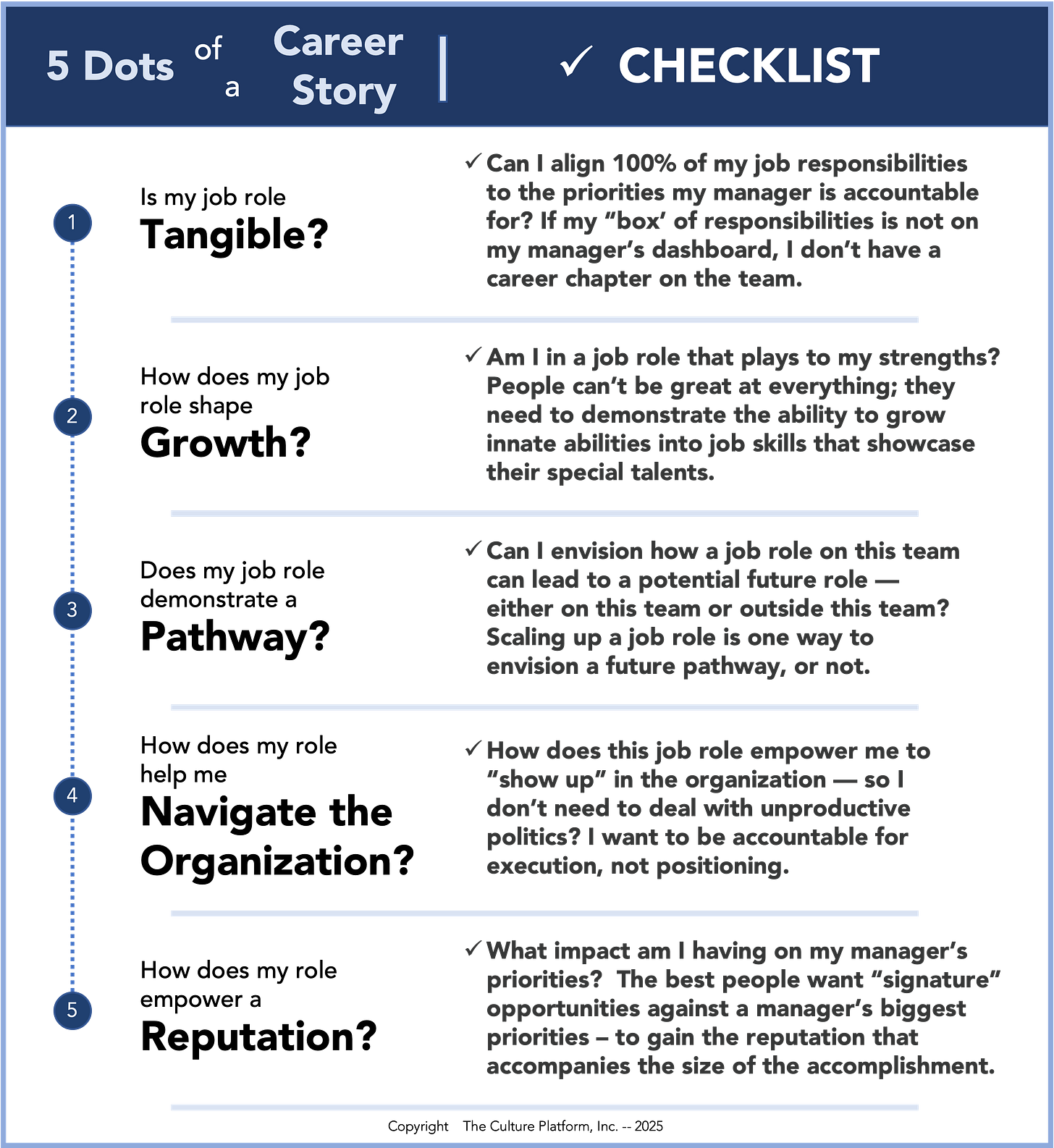
Manager Thought of the Week
“The goal of collaboration is not collaboration itself, but great results.”
I was lucky to meet Morten Hansen, author of Collaboration and co-author of Great by Choice. I hosted Morten at a staff meeting for Cisco’s CEO when he said these words. In our context today, “Great results” is what powers a reputation. That’s what people need to tell a great career story — and it’s our job as managers to make it possible.
In Summary: Principles of Managing in the Age of Uncertainty
- I left Cisco to answer this question with research and evidence: What does the manager of the future look like? What are millennials and gen-z seeking in a manager? Which behaviors, tactics, skills or processes matter? What’s it going to take to attract and keep the best people over the next decade? In short, how to be a great manager.
- Based on this research, the core philosophy of this newsletter is rooted in one idea: successful managers in this moment in time, for this generation of talent, need to be “career dot-connectors.” The next-gen doesn’t expect to spend their entire career on your team — that’s an idea boomers grew up with. A job on your team is like a chapter in a career story to the current generation. If you want the best people on your team, you have to connect the dots between roles on the team and the career opportunities of the people working on the team.
- What is the“Age of Uncertainty”? If the industrial age was about taking predictable steps up the ladder, the age of uncertainty is about finding or discovering the path of a career without any predictable steps, without an obvious ladder — it’s why being a career dot-connector will differentiate you as a manager.
- How to be a Great Manager in the Age of Uncertainty: Be a Career Dot Connector is available on Amazon.
- What kind of manager are you? Take my free self-assessment and learn about yourself.

